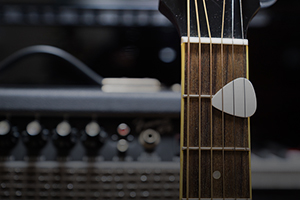World’s Smallest Acoustic Amp

Using a hypothesis that was developed nearly 50 years ago, scientists have built a device than can process radio signals using sound rather than electrons. In the future, acoustic devices like these could make cell phones, radios and other wireless devices smaller and more efficient, while improving sound performance.
Decades ago, a radio-frequency amplifier that could boost a signal 100 times measured 0.4 inches (1cm), required 2000 volts of electricity and consumed 500 milliwatts of power. In contrast, the new device measures 0.008 inches (0.2 millimeters), requires 36 volts of electricity and consumes 20 milliwatts of power. The difference? Advanced nanofabrication techniques.
Acoustic wavelengths are smaller than the diameter of a human hair, so creating components to enhance them requires layers of semiconductor materials that are extremely thin and extremely high-quality – neither of which was possible in the 1970s. The new device was constructed containing layers that are only 83 atoms thick. An intricate process known as heterogeneous integration enabled layers of dissimilar materials to be fused together to form an acoustic-electric amplifier.
Future research will center on determining whether the technology may also be adaptable for all-optical signal processing.
For information: Matt Eichenfield, Sandia National Laboratories, 1515 Eubank SE, Albuquerque, NM 87123; website: https://www.sandia.gov/ or https://newsreleases.sandia.gov/acoustic_amplifier/